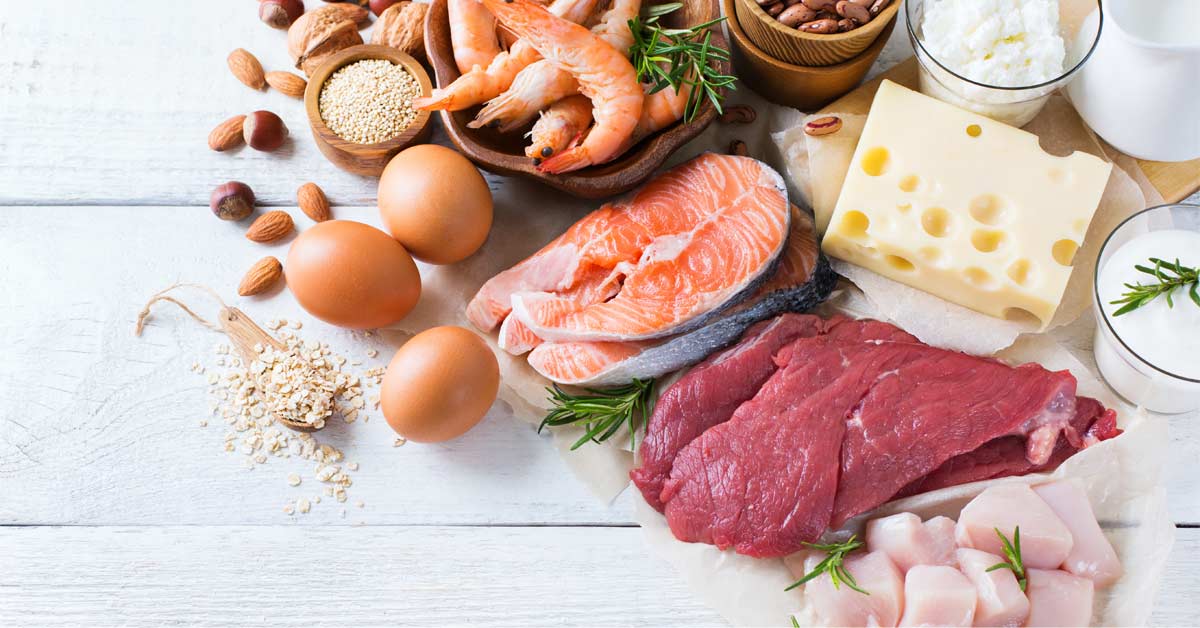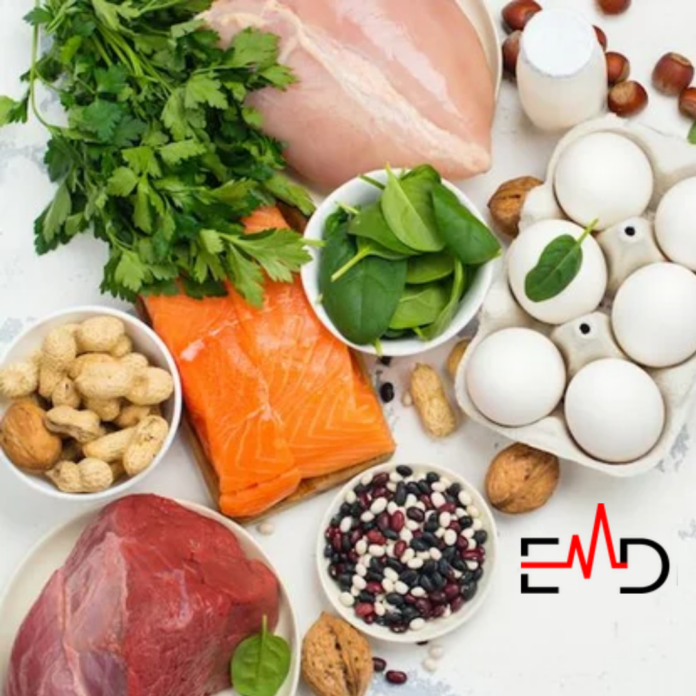Exercise Daily – As athletes, we strive to optimize our performance and achieve our goals. While training and dedication are essential, it’s crucial to recognize nutrition’s critical role in fueling our bodies for success. In this blog, we will explore the concept of the performance plate and how it can help guide athletes in meal planning to meet their nutrition needs and build a balanced diet that enhances performance.
When it comes to athletic performance, training and skill development are essential. However, one aspect that is often overlooked is nutrition. The food you consume is critical in fueling your body and optimizing performance.
The Performance Plate: A Blueprint for Success
What is a Performance Plate?
The performance plate is a concept developed by sports nutritionists and dietitians to provide athletes with a visual representation of how to structure their meals for optimal performance. Like the traditional food pyramid, the performance plate focuses on the right balance of nutrients, portion sizes, and food groups that athletes need to fuel their bodies effectively.
Meal Planning and the Athlete’s Plate
Meal planning is a crucial component of an athlete’s dietary strategy. By using the athlete’s plate as a guide, athletes can ensure they are getting the right combination of nutrients to meet their energy and nutrient needs. Let’s detail the athlete’s plate and explore each component.

The Components of the Athlete’s Plate
Carbohydrates: The Fuel for Performance
Carbohydrates are vital in providing the body with the fuel it needs during training and competition. Athletes should incorporate complex carbohydrates such as whole grains, fruits, and vegetables into their meals. These carbohydrates provide a steady release of energy and help sustain performance throughout training sessions.
Protein: Building Blocks for Recovery and Muscle Growth
Protein is essential for athletes as it aids in muscle repair and growth. Including a high-quality protein source in each meal is crucial. Opt for lean meats, poultry, fish, eggs, and plant-based protein sources like legumes and tofu. Adequate protein intake supports muscle protein synthesis and helps athletes recover faster from intense training sessions.
Healthy Fats: Nourishing the Body
Healthy fats are an essential part of an athlete’s diet as they provide a concentrated source of energy and support overall health. Include foods rich in unsaturated fats, such as avocados, nuts, seeds, and olive oil. These fats help with nutrient absorption and provide long-lasting energy.
Fruits and Vegetables: Essential for Micronutrients
Fruits and vegetables are packed with essential vitamins, minerals, and antioxidants. They play a critical role in supporting the immune system, reducing inflammation, and aiding recovery. Athletes should aim to include a variety of colorful fruits and vegetables in their meals to ensure they are getting a wide range of nutrients.
Tailoring the Athlete’s Plate to Different Training Days
Moderate Training Day Plate
On moderate training days, athletes can follow a performance plate that consists of balanced meals with slightly higher carbohydrate content. This provides the energy needed for training while maintaining a good balance of other nutrients.
Hard Training Day Plate
Hard training days require additional fuel to sustain performance and aid in recovery. Athletes should focus on increasing their carbohydrate intake to provide the necessary energy. Incorporate whole grains, starchy vegetables, and fruits into meals to ensure an adequate supply of carbohydrates.
Game Day Plate
Game days are the pinnacle of an athlete’s performance. Fueling the body properly is essential to optimize performance and maintain energy levels throughout the competition. Athletes should focus on a performance plate with easily digestible carbohydrates, lean protein, and minimal fat.
Vegetarians and Vegans: Tailoring the Athlete’s Plate
Vegetarian and vegan athletes can still follow the athlete’s plate to meet their nutritional needs. Plant-based protein sources such as legumes, tofu, tempeh, and seitan can be substituted for animal-based proteins. Vegetarian and vegan athletes must ensure they get adequate amounts of protein, iron, calcium, and vitamin B12 from alternative sources.

Understanding the Athlete’s Plate: A Practical Guide
Meeting the Nutritional Needs of Athletes
The athlete’s plate is a tool developed by sports dietitians and nutritionists to help athletes understand how to fuel their bodies effectively. It considers the energy and nutrient demands of training, as well as the individual needs of each athlete. By following the athlete’s plate, athletes can ensure they are getting adequate nutrition to support their performance and health.
Meal Planning for Optimal Performance
Meal planning is an essential aspect of following the athlete’s plate. It allows athletes to prepare in advance and make conscious choices about the foods they consume. By planning meals and snacks ahead of time, athletes can ensure they have the right combination of nutrients to fuel their bodies throughout the day.
Consulting a Sports Dietitian
For personalized advice and guidance on meal planning, athletes can consult a sports dietitian. Sports dietitians specialize in optimizing performance through nutrition and can provide tailored recommendations based on an athlete’s specific needs, goals, and dietary preferences.
The Role of Meal Planning
Meal planning is a crucial aspect of building a performance-enhancing diet. It involves strategically organizing meals and snacks to meet the energy and nutrient requirements of the athlete. A sports dietitian can play a vital role in helping athletes create a meal plan that aligns with their goals and individual needs. Athletes can optimize their food intake to support their training and recovery by planning ahead.

Designing the Performance Plate
The performance plate can be customized based on the athlete’s training load and goals. Here are four variations of the performance plate:
The Moderate Day Plate
On a moderate training day, the performance plate should focus on carbohydrates, which serve as the primary fuel source for athletes. Approximately 50-60% of the plate should contain carbohydrates, such as whole grains, fruits, and vegetables. The remaining portion should include a high-quality protein source, such as lean meat, fish, or legumes, and a small amount of healthy fats, like avocado or olive oil.
The Hard Training Day Plate
Athletes require additional energy and nutrients during intense training sessions to support their performance. The hard training day plate should have more carbohydrates, around 60-70%, to fuel the increased training volume. Protein foods should comprise about 20-25% of the plate to support muscle repair and recovery. Healthy fats should include 10-15% to provide sustained energy.
The Game Day Plate
Game days are crucial for athletes, and proper nutrition can significantly impact performance. The game day plate should focus on providing adequate fuel and nutrition. Carbohydrates should still make up most of the plate, around 50-60%, to provide quick energy. Protein foods should comprise 25-30% of the plate to support muscle protein synthesis. Healthy fats should be included in smaller amounts to provide satiety and sustained energy.
The Easy Day Plate
On easy training or rest days, athletes can adjust their nutrition accordingly. The easy day plate should still include a balance of carbohydrates, protein, and healthy fats, but in slightly smaller portions. Approximately 40-50% of the plate can consist of carbohydrates, 20-25% of protein foods, and 10-15% of healthy fats. This plate provides adequate nutrition while accommodating the lower energy expenditure on easy days.
Considerations for Vegetarians and Vegans
Vegetarians and vegans can also benefit from the performance plate concept. They can ensure they meet their protein needs by selecting plant-based sources such as legumes, tofu, tempeh, and quinoa. Additionally, including various fruits, vegetables, whole grains, and plant-based fats like nuts and seeds can provide the necessary nutrients for optimal performance. Vegetarian and vegan athletes must work with a sports dietitian to meet their nutritional requirements.

Conclusion
In conclusion, the athlete’s plate is a valuable tool for athletes looking to optimize their performance through nutrition. By following the principles of the performance plate and incorporating a balance of carbohydrates, protein, healthy fats, and fruits and vegetables into their meals, athletes can fuel their bodies effectively and support their training and competition goals. Meal planning and consulting with a sports dietitian can further enhance an athlete’s understanding of their nutritional needs and help them build a performance-enhancing diet.
FAQs – The Athlete’s Plate Building a Performance-Enhancing Diet
Q: What is the athlete’s plate?
The athlete’s plate visually represents how athletes should structure their meals to optimize performance. It emphasizes the right balance of carbohydrates, protein, healthy fats, and fruits and vegetables.
Q: How can the athlete’s plate benefit me as an athlete?
The athlete’s plate helps ensure you get the proper nutrients in the right proportions to fuel your body effectively and support your training and competition goals.
Q: Can vegetarian and vegan athletes follow the athlete’s plate?
Yes, vegetarian and vegan athletes can still benefit from the athlete’s plate. They can substitute plant-based protein sources for animal-based proteins and ensure they are getting adequate nutrition from alternative sources.
Q: Should I consult a sports dietitian to follow the athlete’s plate?
While it’s not mandatory, consulting a sports dietitian can provide personalized guidance and recommendations based on your needs, goals, and dietary preferences.
Q: How can meal planning help me as an athlete?
Meal planning allows you to prepare in advance and make conscious choices about the foods you consume. It ensures you have the right combination of nutrients to fuel your body throughout the day and support your performance and recovery.





